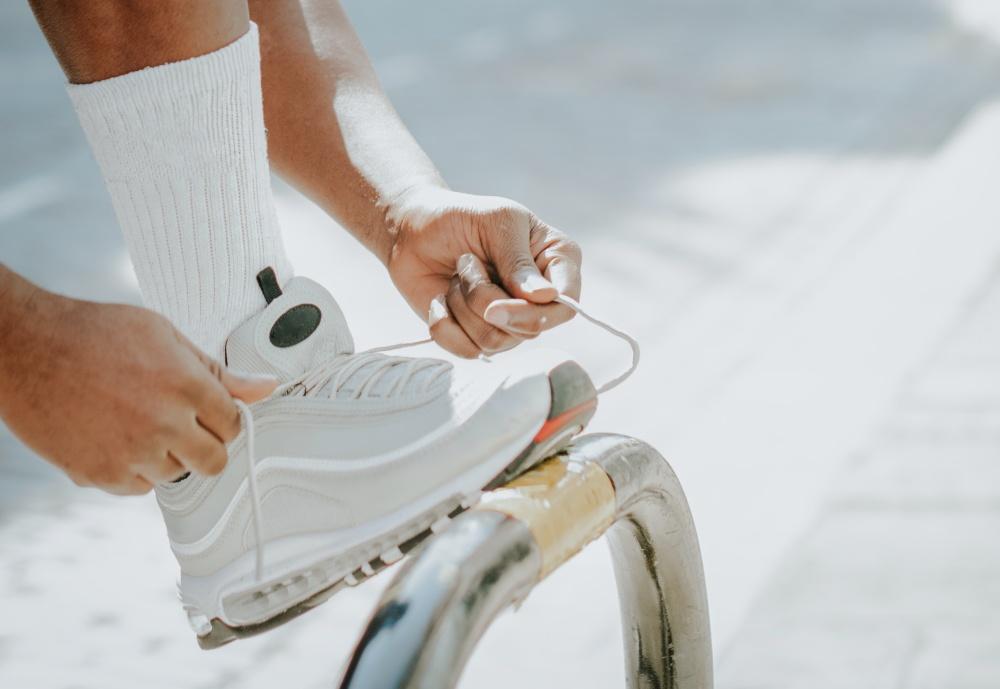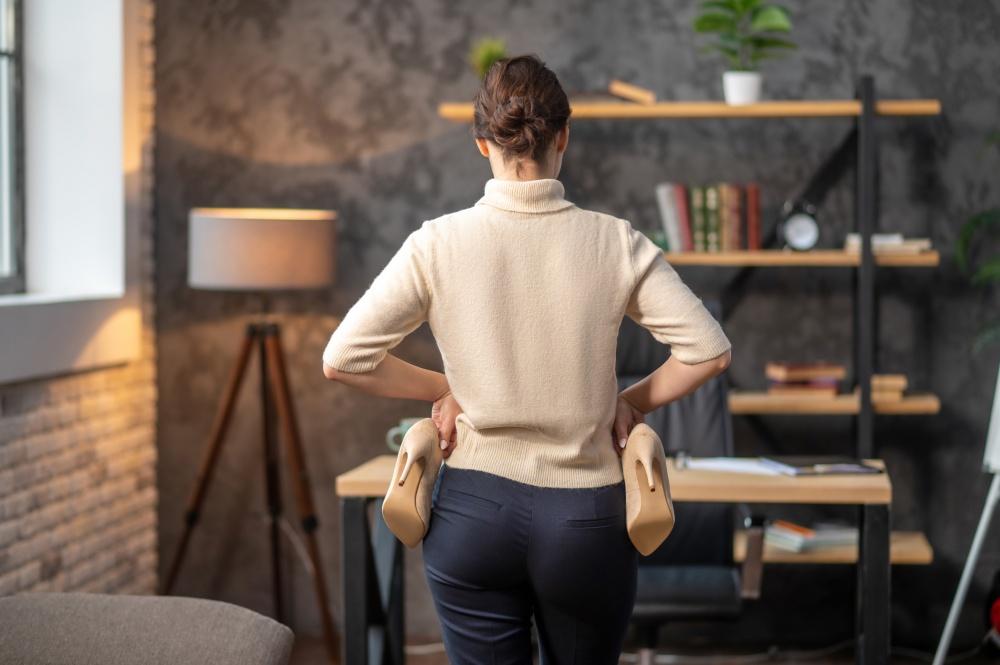Can Bad Shoes Cause Back Pain?
It’s a question many of us have pondered while nursing a nagging ache at the end of a long day. The direct answer is yes, bad shoes can cause back pain. In fact, the link between footwear and spinal health is so significant that a lower back specialist will often include a patient’s shoe choices as part of their diagnostic assessment.
Most people might not think much about the functionality of their footwear, but the shoes on our feet are the foundation of our bodies. That’s why what we wear on our feet has a profound impact on our posture and spinal alignment.
This post will explore this critical connection and show you why the conversation about shoes and back pain is one you can no longer ignore. We’ll also delve into how to shop for shoes that may help with back pain.
The Relationship Between Footwear and the Kinetic Chain
To truly understand how bad shoes can cause back pain, you must first grasp the concept of the “kinetic chain.” To do so, think of your body as an interconnected system of muscles, bones, and joints, all working together to allow movement.
This chain begins at the ground, with your feet, and moves all the way up through your ankles, knees, hips, and ultimately, to your spine. When your feet are forced into an unnatural position by unsupportive footwear, this foundation becomes unstable. This misalignment then travels up the kinetic chain.
For example, if your shoes lack proper arch support, your feet may roll inward excessively (overpronation). To compensate, your knees may turn inward, your hips may tilt forward, and your pelvis may shift out of alignment.
This chain reaction forces your spine to adjust its natural curvature to maintain balance, placing unnatural strain on your discs, ligaments, and muscles. Over time, these subtle compensations can become the source of chronic back pain. The key is that the feet may not feel any discomfort with such unsupportive footwear and the strains may show up in the lower back.
Choosing the Right Shoes for Spinal Support
Many foot and ankle specialists will agree that the right shoes can help those with back pain. The goal is to choose footwear that promotes proper alignment and stability throughout your body by focusing on these elements:
1. Arch Support
The arch of your foot acts as a natural shock absorber and stabiliser, but it relies on support from your shoes to function correctly. A shoe with adequate arch support maintains the foot’s natural structure and helps to distribute pressure evenly across the entire surface of your foot.
This is particularly crucial for people with either flat feet (overpronation) or high arches (supination). As mentioned above, without this support, the feet roll inward or outward excessively, creating a misalignment that travels up the kinetic chain and directly impacts the spine.
While proper arch support is vital for spinal health, too much arch support can actually hurt your back. Excessive or improperly placed support can force the foot into an unnatural position and cause new strains. Hence, the key is finding support that is specific to your foot type, ensuring a neutral and stable foundation for the rest of your body.
How to choose the correct amount of arch? A simple guide is that the height of the arch should be such that it causes the heel to be in a straight alignment with the leg, as seen from the back. Of course, you may not be able to see the heel properly with many shoes, so this requires some estimation.
2. Cushioning and Shock Absorption
During everyday activities like walking or running, the force transmitted through your body with each step is considerable. Hence, the cushioning and shock absorption properties of a shoe’s soles are your first line of defence against this impact.
Effective shock absorption minimises the jarring stress on your joints — ankles, knees, hips, and most importantly, your back. A shoe with a worn-out or thin sole offers minimal protection and support, allowing these impact forces to travel directly up your kinetic chain, potentially causing micro-traumas to your back over time.
Proper cushioning for shoes is especially relevant for people who are active or participate in sports, as insufficient shock absorption can be a contributing factor to sports injuries and chronic pain.

3. Heel Height and Stability
The height of a shoe’s heel has a dramatic influence on your body’s posture. As discussed in our blog on the impact of wearing high heels, excessively high heels push the body’s centre of gravity forward. To prevent yourself from falling, your lower back is forced to overarch, a posture known as hyperlordosis. This puts significant strain on the spinal muscles and discs, leading to back pain.
On the other hand, another common question when it comes to heel height is, “Can flat shoes cause back pain?”. The answer is yes, if they lack proper support.
While flat shoes might seem like a healthy alternative, those with no arch support or cushioning — such as ballet flats or flip-flops — usually offer insufficient protection. These types of shoes allow the foot to overpronate, leading to the same kinetic chain misalignments that cause spinal stress.
Instead, your shoes should have a stable, moderately elevated heel (around 1 to 1.5 inches). This slight lift promotes a more neutral posture, supporting the spine without placing undue stress on it.
4. Proper Fit and Comfort
Even the most technologically advanced or well–designed shoe is useless if it doesn’t fit your foot correctly. A shoe that is too tight, too loose, or the wrong shape for your foot can cause discomfort and blisters, and as a result, you will subtly alter your gait to compensate. This then creates muscular imbalances and places increased, uneven strain on your back, hips, and knees.
Hence, it’s essential to get your feet measured regularly, buy shoes at the end of the day when your feet are at their largest, and always ensure there is enough room for your toes to move freely without sliding forward.
5. Motion Control and Orthotic Insoles
For individuals with specific biomechanical issues, such as severe overpronation or flat feet, standard supportive shoes may not be enough. This is where motion control features and orthotic insoles come into play. Motion control shoes are designed to provide extra stability and prevent excessive inward or outward rolling of the foot.
For a more personalised solution, a specialist may recommend custom orthotic insoles. These are inserts made specifically for your feet, providing tailored support and correction for your unique biomechanics. By ensuring optimal alignment from the ground up, orthotic insoles can be effective in stabilising the kinetic chain and thus protecting your back from stress and strain.
Footwear and Your Back Health
While your shoes are not the sole cause of back pain, choosing the wrong ones can certainly be a significant contributing factor since the health of your spine is directly influenced by the foundation you stand on.
Making thoughtful footwear choices by prioritising proper arch support, adequate cushioning, and a stable heel can be a vital step towards preventing back pain and promoting overall well-being.




